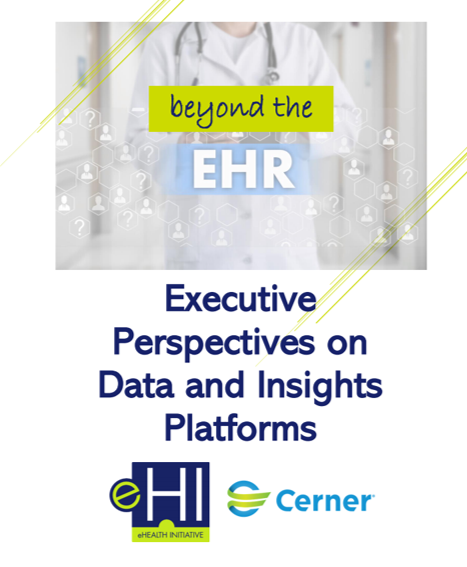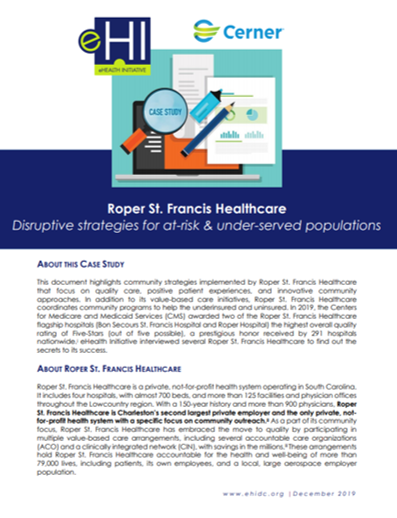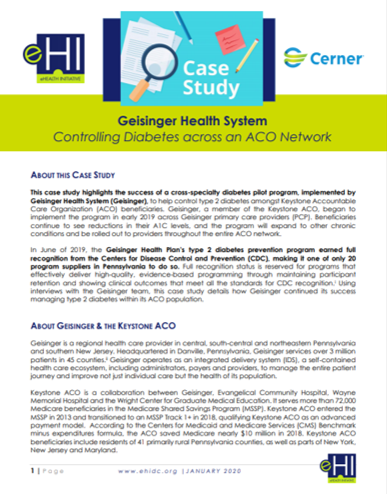Topic intro description here. Limited to 145 characters. Topic intro description here. Limited to 145 characters. Topic intro description here.
PRESCRIPTION PRICE TRANSPARENCY AND THE PATIENT EXPERIENCE
PRESCRIPTION PRICE TRANSPARENCY AND THE PATIENT EXPERIENCE
As stories about sticker shock and the cost of care dominate headlines and policy discussions, healthcare organizations are looking for cost-effective ways to improve patient outcomes and experience. Prescription price transparency tools hold particular promise. We already know that providers want greater price transparency for their patients. In fact, 74% of U.S. physicians say they want to see a patient’s medical benefit information before prescribing, and 59% want to compare the cost of similar medications.
Are patients equally eager to talk medication costs and coverage at the point of care? Surescripts commissioned a survey of 1,001 U.S. patients to understand their prescription challenges, desires and behavior—and how their experience with their prescriptions affects the healthcare decisions they make.
The full Surescripts report can be viewed at this link.
What big tech companies aren't saying about HHS data rules
What big tech companies aren't saying about HHS data rules
Hospitals and doctors are pitted against patient data advocates in a strident debate over HHS plans to facilitate data sharing with software companies. But the biggest tech players — Google, Facebook, Amazon and others — have largely remained on the sidelines.
Health care professional groups have flooded HHS with comments on upcoming data sharing rules, expressing worry that developers could sell patient data for advertising and marketing purposes. They are urging HHS to add privacy provisions before finalizing the rules, which would force providers, vendors and insurers to adopt common standards so patients can share their information with apps they choose.
The full Politico article can be viewed at this link.
Robotic medicine may be the weapon the world needs to combat the coronavirus
Robotic medicine may be the weapon the world needs to combat the coronavirus
With top government health officials warning it is only a matter of time before there is a COVID-19 outbreak in the U.S., it’s not likely that specialized masks and respirators, or canned goods and Clorox, will be sufficient to fight a global pandemic. Viral outbreaks like COVID-19 highlight the growing role new medical technology — in particular, ideas from the field of robotics — can play in fighting the spread of novel infectious diseases. But medical experts say it will be a mistake if innovation rolls out only when the world is on edge.
The full CNBC article can be viewed at this link.
The Challenges Of Combating Rare Diseases - And Five Innovations Making A Real Difference
The Challenges Of Combating Rare Diseases - And Five Innovations Making A Real Difference
February 29, 2020 is Rare Disease Day, an annual event that aims to raise awareness amongst the general public and decision-makers about rare diseases and their impact on patients' lives.
I’ve seen first-hand the difficulties that patients with rare diseases can face. In my first week as an NHS geneticist, I met a child who, despite seeing highly specialised doctors for over a year, had not yet been diagnosed because their symptoms, findings and lab tests matched no known disease. It was only after trawling medical databases and case studies that I was able to find the likely diagnosis, subsequently confirmed. The disease was so rare that naming it here could identify the patient.
Rare Disease Day, established in 2008 by the European Organisation for Rare Diseases (EURORDIS), has helped to amplify the great work being done by patient associations, which are supported by international and national organisations such as EURORDIS and NORD, to bring together those who suffer from rare diseases and empower them to drive positive change. Recently, this issue has been put in the spotlight by Dr. Lisa Sanders’s New York Times column and a Netflix documentary series. However, rare diseases still receive much less attention than other medical challenges.
In this piece, I want to examine why this is, and look at the innovations that are helping to bridge the gap.
The full Forbes article can be viewed at this link.
Reports: Future and Current Implementations of Data & Insights Platforms
|
|
|
|
Reports:
Beyond the EHR Executive Perspectives on Data & Insights Platforms –
This report surveyed leading executives in the healthcare industry critical importance of having a data and insights platform to manage their patient and consumer populations. Data and insights platforms are helping healthcare stakeholders manage large volumes of data amongst and between systems, while connecting members of a care team, including the actual patient. Data will continue to be the most valuable asset in managing current and future business models. Read the Full Report Here.
Roper St. Francis Case Study –
This case study highlights community strategies implemented by Roper St. Francis Healthcare that focus on quality care, positive patient experiences, and innovative community approaches. In addition to its value-based care initiatives, Roper St. Francis Healthcare coordinates community programs to help the underinsured and uninsured. eHealth Initiative interviewed several Roper St. Francis Healthcare to find out the secrets to its success. Read the Full Report Here.
Geisinger Health System Case Study: Controlling Diabetes across an ACO Network –
This case study highlights the success of a cross-specialty diabetes pilot program, implemented by Geisinger Health System (Geisinger), to help control type 2 diabetes amongst Keystone Accountable Care Organization (ACO) beneficiaries. Beneficiaries continue to see reductions in their A1C levels, and the program will expand to other chronic conditions and be rolled out to providers throughout the entire ACO network. Read the Full Report Here.
Can AI flag disease outbreaks faster than humans? Not quite
Can AI flag disease outbreaks faster than humans? Not quite
Did an artificial-intelligence system beat human doctors in warning the world of a severe outbreak of COVID-19 in China?
In a narrow sense, yes. But what the humans lacked in sheer speed, they more than made up in finesse.
Early warnings of disease outbreaks can help people and governments save lives. In the final days of 2019, an AI system in Boston sent out the first global alert about a new viral outbreak in China. But it took human intelligence to recognize the significance of the outbreak and then awaken response from the public health community.
What’s more, the mere mortals produced a similar alert only a half-hour behind the AI systems.
For now, AI-powered disease-alert systems can still resemble car alarms — easily triggered and sometimes ignored. A network of medical experts and sleuths must still do the hard work of sifting through rumors to piece together the fuller picture. It’s difficult to say what future AI systems, powered by ever larger datasets on outbreaks, may be able to accomplish.
The full AP News article can be viewed at this link.
Interim Estimates of 2019–20 Seasonal Influenza Vaccine Effectiveness — United States, February 2020
Interim Estimates of 2019–20 Seasonal Influenza Vaccine Effectiveness — United States, February 2020
During the 2019–20 influenza season, influenza-like illness (ILI)* activity first exceeded the national baseline during the week ending November 9, 2019, signaling the earliest start to the influenza season since the 2009 influenza A(H1N1) pandemic. Activity remains elevated as of mid-February 2020. In the United States, annual vaccination against seasonal influenza is recommended for all persons aged ≥6 months (1). During each influenza season, CDC estimates seasonal influenza vaccine effectiveness in preventing laboratory-confirmed influenza associated with medically attended acute respiratory illness (ARI). This interim report used data from 4,112 children and adults enrolled in the U.S. Influenza Vaccine Effectiveness Network (U.S. Flu VE Network) during October 23, 2019– January 25, 2020. Overall, vaccine effectiveness (VE) against any influenza virus associated with medically attended ARI was 45% (95% confidence interval [CI] = 36%–53%).
The full CDC interim report can be downloaded below.
A Deep Learning Approach to Antibiotic Discovery
A Deep Learning Approach to Antibiotic Discovery
Due to the rapid emergence of antibiotic-resistant bacteria, there is a growing need to discover new antibiotics. To address this challenge, we trained a deep neural network capable of predicting molecules with antibacterial activity. We performed predictions on multiple chemical libraries and discovered a molecule from the Drug Repurposing Hub—halicin—that is structurally divergent from conventional antibiotics and displays bactericidal activity against a wide phylogenetic spectrum of pathogens including Mycobacterium tuberculosis and carbapenem-resistant Enterobacteriaceae. Halicin also effectively treated Clostridioides difficile and pan-resistant Acinetobacter baumannii infections in murine models. Additionally, from a discrete set of 23 empirically tested predictions from >107 million molecules curated from the ZINC15 database, our model identified eight antibacterial compounds that are structurally distant from known antibiotics. This work highlights the utility of deep learning approaches to expand our antibiotic arsenal through the discovery of structurally distinct antibacterial molecules.
The full article can be viewed at this link.
Webinar Presentation: AI and Machine Learning: Turn Your Data into Actionable Insights
What challenges could you address if you were not limited by resources and computing power? What if you could also give users the ability to manipulate big data – at scale – to create artificial intelligence models? It’s time to put your data to work to support improved care and outcomes using data science and predictive analytics. Join this webinar to hear about solutions to reduce readmissions and improve patient satisfaction.
Speakers:
- Cole Erdmann
Director, Clinical Intelligence, Cerner Corporation
 As the director of Clinical Intelligence, Cole Erdmann is focused on the advancement of Cerner systems to better the development and deployment of intelligence and knowledge. He is responsible for the creation of systems to automate the intelligence behind population health programs to support the person and care team to improve outcomes. He makes an impact on clients by systematically enabling our clients with intelligence providing early detection of various types of risk, proposed actions to mitigate risk, and ongoing surveillance for future trends.
As the director of Clinical Intelligence, Cole Erdmann is focused on the advancement of Cerner systems to better the development and deployment of intelligence and knowledge. He is responsible for the creation of systems to automate the intelligence behind population health programs to support the person and care team to improve outcomes. He makes an impact on clients by systematically enabling our clients with intelligence providing early detection of various types of risk, proposed actions to mitigate risk, and ongoing surveillance for future trends.
- Dr. William Feaster, MD, MBA
Vice President, Chief Health Information Officer at CHOC Children’s Hospital
 Dr. Feaster is Vice President, Chief Health Information Officer at CHOC Children’s Hospital in Orange, California. He came to CHOC in 2012 as its Chief Medical Information Officer. At CHOC, he has guided the continued implementation of a fully integrated EMR for both the inpatient and ambulatory settings at CHOC. As a result, the organization has achieved HIMSS Stage 7 EMRAM certification as well as the Nicholas E Davies Award of Excellence in 2016 for utilizing health information technology to improve healthcare outcomes.
Dr. Feaster is Vice President, Chief Health Information Officer at CHOC Children’s Hospital in Orange, California. He came to CHOC in 2012 as its Chief Medical Information Officer. At CHOC, he has guided the continued implementation of a fully integrated EMR for both the inpatient and ambulatory settings at CHOC. As a result, the organization has achieved HIMSS Stage 7 EMRAM certification as well as the Nicholas E Davies Award of Excellence in 2016 for utilizing health information technology to improve healthcare outcomes.
- Navneet Srivastava
Senior Solutions Architect, Amazon Web Services
 Navneet, a Sr. Solutions Architect, is responsible for helping provider organizations and healthcare companies to deploy electronic medical records, devices, and AI/ML-based applications while educating customers about how to build secure, scalable, and cost-effective AWS solutions. He develops strategic plans to engage customers and partners, and works with a community of technically focused HCLS specialists within AWS. He is skilled AI, ML, Big Data, and healthcare related technologies. Navneet has a M.B.A from NYIT and a bachelors in software Engineering and holds several associate and professional certifications for architecting on AWS.
Navneet, a Sr. Solutions Architect, is responsible for helping provider organizations and healthcare companies to deploy electronic medical records, devices, and AI/ML-based applications while educating customers about how to build secure, scalable, and cost-effective AWS solutions. He develops strategic plans to engage customers and partners, and works with a community of technically focused HCLS specialists within AWS. He is skilled AI, ML, Big Data, and healthcare related technologies. Navneet has a M.B.A from NYIT and a bachelors in software Engineering and holds several associate and professional certifications for architecting on AWS.
- Janos Hajagos, Ph.D.
Chief of Data Analytics, Stony Brook Medicine
 Dr. Janos G. Hajagos is Chief of Data Analytics and Research Assistant Professor in the Department of Biomedical Informatics at Stony Brook University. He is the lead data scientist across several quality initiatives at Stony Brook Medicine and for the Suffolk Care Collaborative’s DSRIP award. Before his current position he was the Associate Director of Data Computation in the Division of Applied Informatics. There he was integral in several data analytic applications and the development of production web applications for the New York State Department of Health’s Medicaid Program. Dr. Hajagos has published and presented his informatics work at a range of national conferences. He received his PhD in Ecology and Evolution in 2005 from Stony Brook University. Dr. Hajagos's current areas of research in biomedical informatics can be divided into two areas. The first is applying machine learning approaches to quantify patterns of health care utilization. This includes the application of graph databases and algorithms to EMR and administrative health care data sets. The second is the application of semantic technologies to bridge disparate sources of information. Dr. Hajagos has been developing tools to adapt and utilize the UMLS to find novel links between basic science researchers and clinicians.
Dr. Janos G. Hajagos is Chief of Data Analytics and Research Assistant Professor in the Department of Biomedical Informatics at Stony Brook University. He is the lead data scientist across several quality initiatives at Stony Brook Medicine and for the Suffolk Care Collaborative’s DSRIP award. Before his current position he was the Associate Director of Data Computation in the Division of Applied Informatics. There he was integral in several data analytic applications and the development of production web applications for the New York State Department of Health’s Medicaid Program. Dr. Hajagos has published and presented his informatics work at a range of national conferences. He received his PhD in Ecology and Evolution in 2005 from Stony Brook University. Dr. Hajagos's current areas of research in biomedical informatics can be divided into two areas. The first is applying machine learning approaches to quantify patterns of health care utilization. This includes the application of graph databases and algorithms to EMR and administrative health care data sets. The second is the application of semantic technologies to bridge disparate sources of information. Dr. Hajagos has been developing tools to adapt and utilize the UMLS to find novel links between basic science researchers and clinicians.



